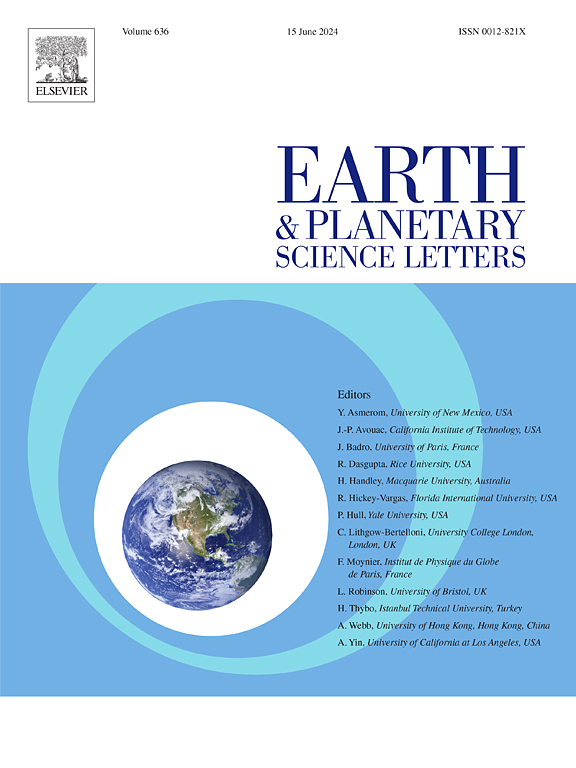Large burial flux of modern organic carbon in the St. Lawrence estuarine system indicates a substantial atmospheric carbon sink
IF 4.8
1区 地球科学
Q1 GEOCHEMISTRY & GEOPHYSICS
引用次数: 0
Abstract
Estuarine and fjord systems host large amounts of buried organic carbon with highly heterogeneous sources in their sediments. The age of this buried carbon is important because it determines to what extent it represents a short-term atmospheric carbon sink on decadal to centennial timescales. Here, we utilized molecular (fatty acids and n-alkanes) and bulk radiocarbon (14C), stable isotope, and elemental analyses and a mixing model to apportion the source of organic carbon buried in the Lower St. Lawrence Estuary, the world's largest estuary, and the linked Saguenay Fjord, differentiating between modern, millennial aged, and fossil carbon sources. The 14C ages of long-chain (C24+26) fatty acids indicate an average terrestrial storage time of ∼1700 ± 284 yr (before present) for soil organic carbon prior to re-deposition in these sediments. A three-tracer source model for bulk organic carbon indicates that 64 ± 0.8 % of organic carbon buried in the Saguenay Fjord and Lower St. Lawrence Estuary was modern marine- and terrestrially-derived carbon, representing direct atmospheric carbon sinks, while 36 ± 4 % was pre-aged soil and fossil petrogenic organic carbon. Comparison with a similar dataset from the subtropical Pearl River Estuary in China indicates that burial of soil and petrogenic organic carbon is significantly lower in the Lower St. Lawrence Estuary on both a fractional and flux basis, probably as a result of greater topographic relief and human land use in the Pearl River catchment, which generates greater erosional inputs of soil and petrogenic carbon.
求助全文
约1分钟内获得全文
求助全文
来源期刊

Earth and Planetary Science Letters
地学-地球化学与地球物理
CiteScore
10.30
自引率
5.70%
发文量
475
审稿时长
2.8 months
期刊介绍:
Earth and Planetary Science Letters (EPSL) is a leading journal for researchers across the entire Earth and planetary sciences community. It publishes concise, exciting, high-impact articles ("Letters") of broad interest. Its focus is on physical and chemical processes, the evolution and general properties of the Earth and planets - from their deep interiors to their atmospheres. EPSL also includes a Frontiers section, featuring invited high-profile synthesis articles by leading experts on timely topics to bring cutting-edge research to the wider community.
 求助内容:
求助内容: 应助结果提醒方式:
应助结果提醒方式:


